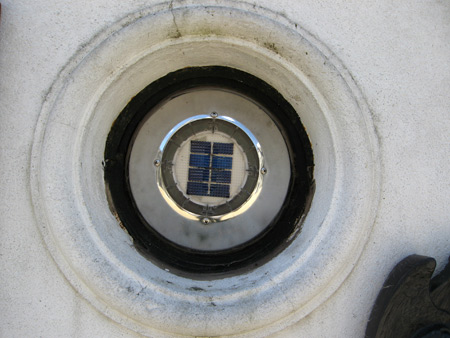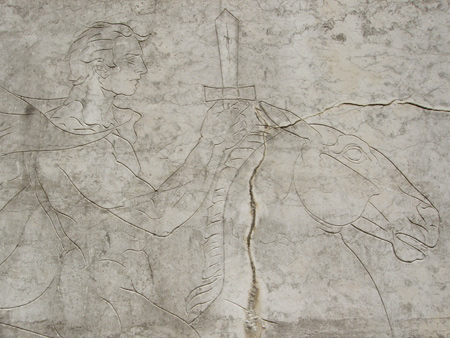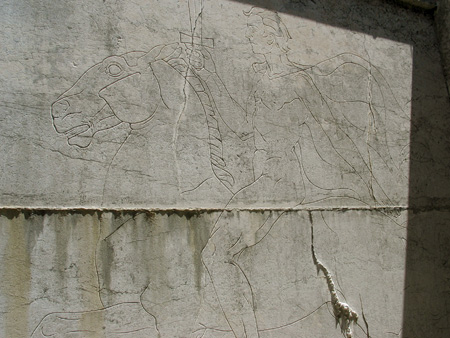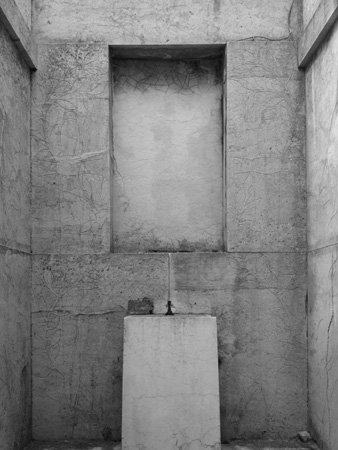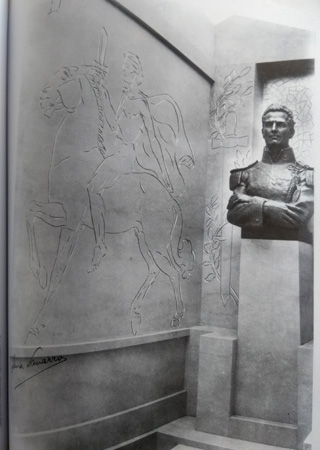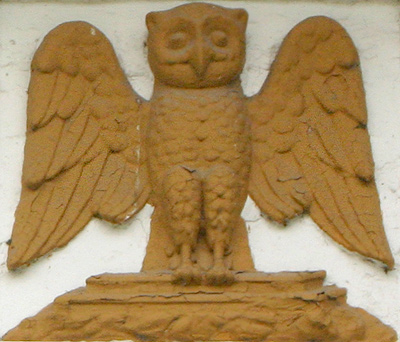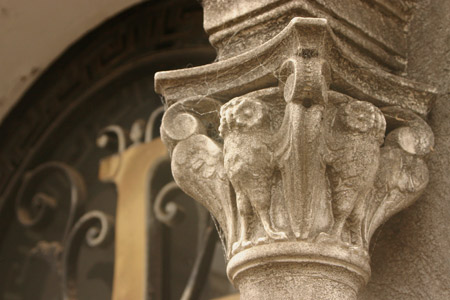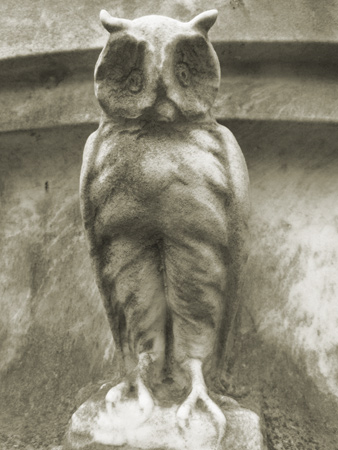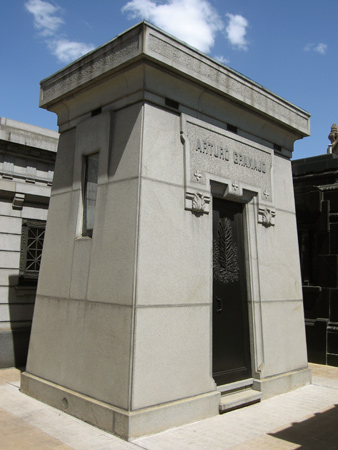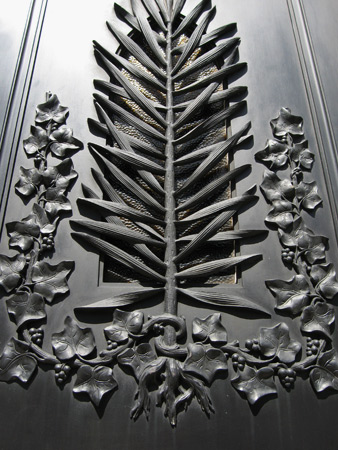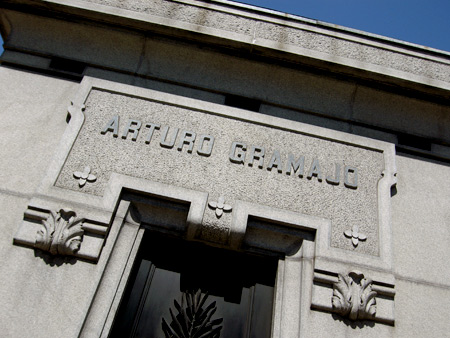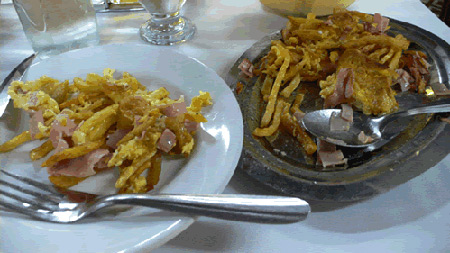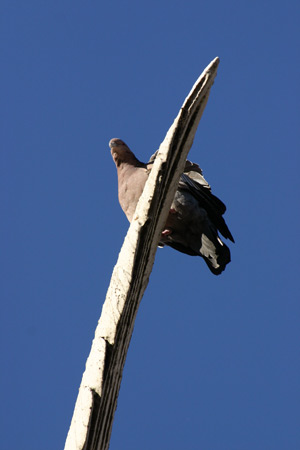Although Recoleta Cemetery doesn’t fit into the standard, macabre mold—on the contrary, it’s usually calm, relaxing & peaceful no matter how many tourists are packed inside—it’s still a cemetery. Some might believe that the spirit lives forever, but the body certainly doesn’t. Keep in mind that Recoleta Cemetery is a mix of tombs & mausoleums… enclosed structures with caskets inside. Now imagine the interior of your favorite tomb during the long, hot summers in Buenos Aires. It isn’t pretty.
Fortunately, mausoleums come equipped with ingenious & decorative types of ventilation. The most common are glass panels on the rooftop with a gap that allows air to circulate freely. But due to their fragile nature, ceiling vents are usually the first to show signs of decay. Panels fall out over time & go crashing into the interior. Hailstorms wreak havoc. But if panels are decorated or colored, they add a very special touch:
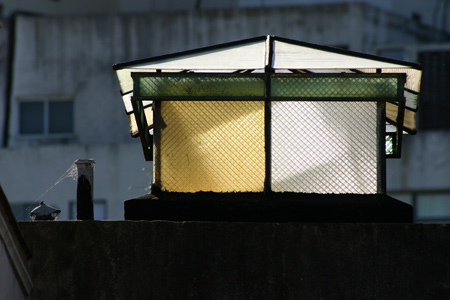
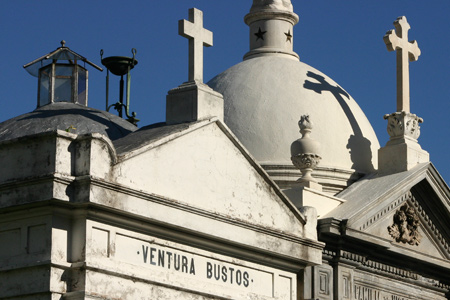
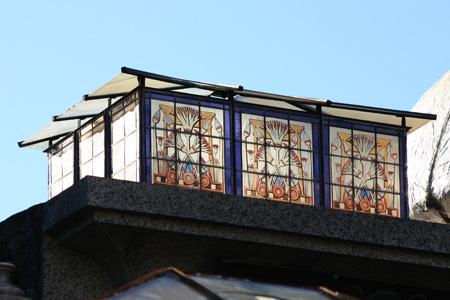
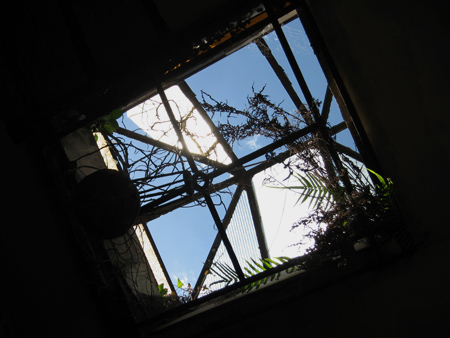
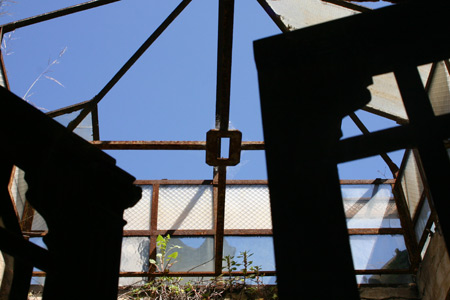
Occasionally the upper part of domes will have a subtle grill incorporated:
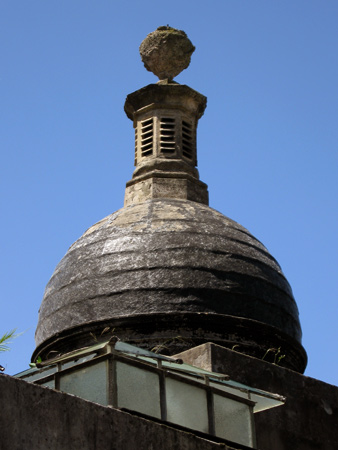
Modern options break the architectural harmony of the place, but no one seems to mind as they spin in the breeze:
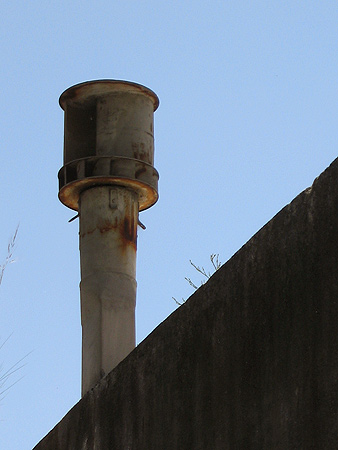
The most creative vent attaches solar cells on the exterior to power the fan inside:
